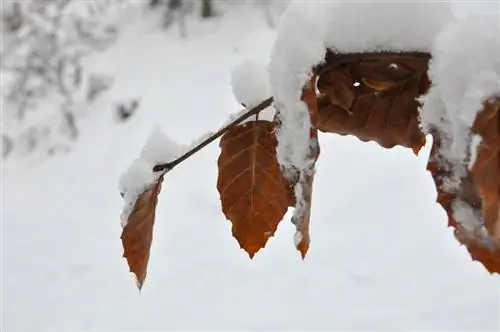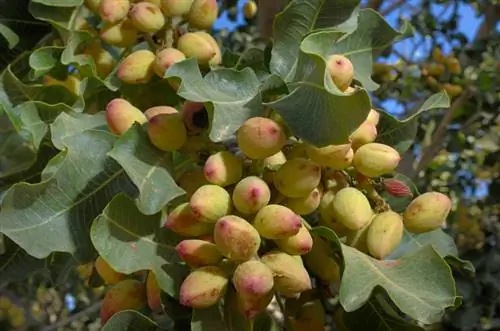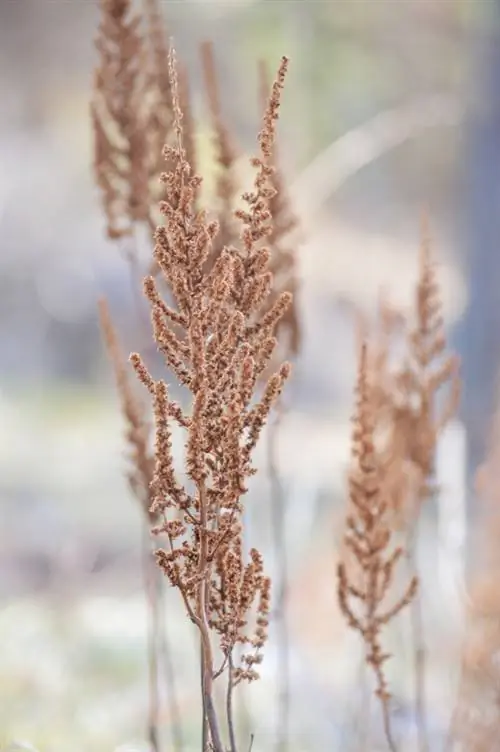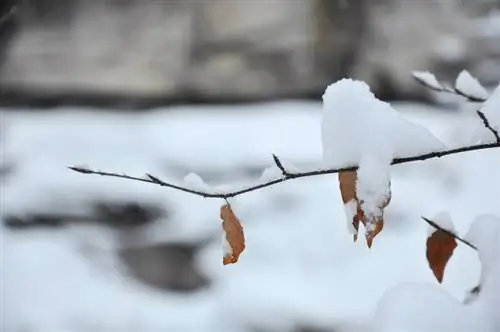- Author admin [email protected].
- Public 2023-12-16 16:46.
- Last modified 2025-01-23 11:20.
Common beech hedges are hardy. They can easily survive temperatures as low as minus 30 degrees. Nevertheless, it makes sense to provide a layer of mulch in autumn. Occasional watering is also advisable in dry winters.
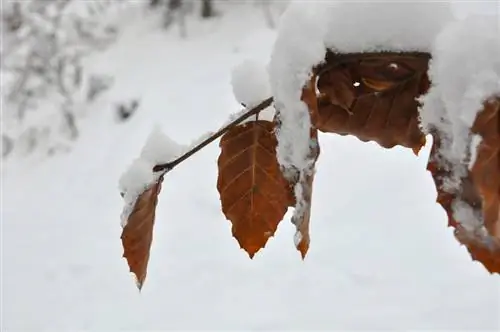
How do I care for my beech hedge in winter?
Common beech hedges are hardy and can withstand temperatures down to -30°C. In winter, a layer of mulch is recommended to protect the soil from drying out and to provide nutrients. If drought persists, the hedges should be watered occasionally and for snowy regions a tapered cut is advisable.
Common beech hedges are absolutely hardy
Common beeches are native to Central Europe and are therefore used to cold winters. They can also tolerate very low temperatures over long periods of time.
You basically don't need to prepare older, well-established beech hedges for winter.
You should definitely provide freshly planted hedges with a layer of mulch in the first few years. Young beech trees need some time to develop sufficient roots with which they can support themselves in winter.
Why a mulch blanket makes sense in winter
Mulch blankets have proven very useful for beech hedges in winter, for several reasons: They
- protect the soil from drying out
- prevent weed emergence
- offer useful garden creatures protection
- supply the soil with new nutrients
All materials that are compostable are suitable for mulching. You can add a layer of mulch made from fall leaves, grass clippings, garden waste, compost or straw. But make sure that there are no inflorescences in the material and that all parts are he althy and not infested with pests.
Never let beech hedges dry out in winter
Common beech hedges cannot tolerate complete drought. This can be a problem in winters with little rain or a long-lasting thick snow cover.
If it is dry for a long time, water the beech hedge once. Use a frost-free day for watering.
Cut beech hedges to a point
In snowy areas, European beech hedges often suffer from broken snow. The weight of the snow causes the branches to simply break. The copper beech trees recover from this, but they don't offer such a beautiful sight in the first few years.
Always cut beech hedges so that they taper to a point at the top. This means that the snow can easily slide off and does not weigh on the branches of the beech hedge.
The last pruning should take place in August. Cutting the hedge before winter is not advisable.
Tip
Common beech hedges only lose a few leaves in autumn. The leaves usually remain hanging until spring. The fallen leaves are a natural fertilizer if they are allowed to remain under the hedge.

